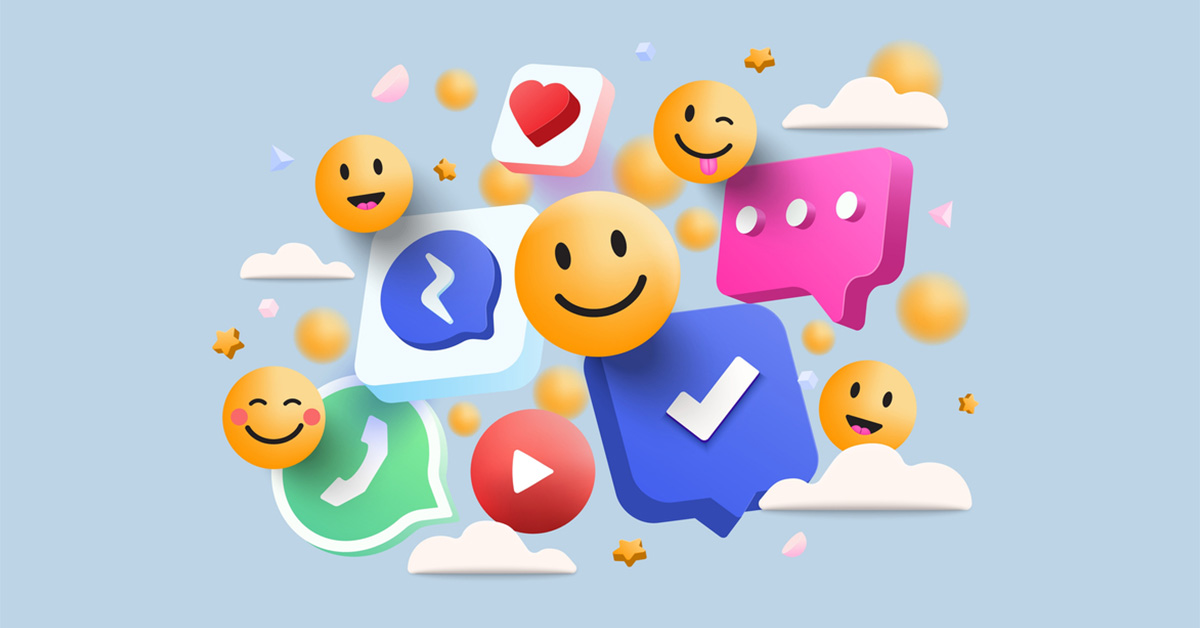How Emojis Enhance Communication in the Digital Age
- Date

What if your thumbs could smile, frown, or send a hug? Emojis have quietly become our go-to emotional shorthand in digital conversations, replacing long explanations with a single icon. Whether you’re dropping a 😅 in a work group chat or ending a late-night message with ❤️, these tiny symbols are doing a lot more than decorating your screen—they’re changing how we connect, one pixel at a time.
The Evolution of Emojis
Emojis originated in Japan in the late 1990s, created by Shigetaka Kurita to convey information succinctly within character limits. Derived from the Japanese words “e” (picture) and “moji” (character), emojis were designed to add emotional nuance to digital messages. Over time, they evolved from simple emoticons like 🙂 to a vast array of icons representing emotions, objects, and concepts.
Today, the Unicode Consortium standardizes emojis, ensuring consistency across platforms and devices. This standardization allows users worldwide to communicate feelings and ideas effectively, regardless of language or culture.
Enhancing Emotional Expression
One of the primary functions of emojis is to convey emotions that might be lost in plain text. For instance, a simple “I’m fine” can be interpreted in various ways, but adding a 😊 or 😞 provides clarity about the sender’s true feelings. Emojis act as non-verbal cues, similar to facial expressions and tone of voice in face-to-face interactions, reducing misunderstandings and fostering empathy.
Bridging Cultural and Linguistic Gaps
Emojis serve as a universal language, enabling people from diverse backgrounds to communicate effectively. A thumbs-up 👍 or a heart ❤️ conveys approval or affection without the need for words. However, it’s essential to recognize that some emojis may have different interpretations across cultures. For example, the folded hands emoji 🙏 is seen as a gesture of gratitude in some cultures and a prayer symbol in others. Being mindful of these differences ensures respectful and accurate communication.
Boosting Engagement on Social Media
Incorporating emojis into social media posts can significantly enhance engagement. Studies have shown that tweets with emojis receive higher interaction rates, and Facebook posts with emojis garner more likes, comments, and shares. Emojis make content more relatable and visually appealing, capturing the audience’s attention and encouraging interaction.
Emojis in Professional Communication
While emojis are prevalent in casual conversations, their use in professional settings is growing. When used appropriately, emojis can humanize workplace communication, convey friendliness, and build rapport among colleagues. For instance, a simple 👍 can indicate agreement or approval in a chat. However, it’s crucial to consider the workplace culture and the recipient’s preferences to ensure professionalism is maintained.
Psychological Insights into Emoji Usage
Research indicates that individuals who frequently use emojis tend to have higher emotional intelligence. Emojis allow users to express feelings more openly, facilitating better understanding and connection in digital interactions. Moreover, emojis can serve as tools for self-expression and emotional regulation, helping individuals convey complex emotions succinctly.
Accessibility Considerations
While emojis enhance communication for many, it’s essential to consider accessibility. Screen readers used by visually impaired individuals may not interpret emojis as intended, leading to potential misunderstandings. To ensure inclusivity, it’s advisable to use emojis alongside descriptive text and avoid over-reliance on them to convey critical information.
Commonly Used Emojis and Their Meanings
Understanding the meanings of popular emojis can enhance communication effectiveness:
- 😂 Face with Tears of Joy: Indicates something is extremely funny.
- ❤️ Red Heart: Expresses love and affection.
- 👍 Thumbs Up: Signifies approval or agreement.
- 🙏 Folded Hands: Represents gratitude or prayer.
- 😎 Smiling Face with Sunglasses: Denotes coolness or confidence.
Being aware of these meanings helps in selecting appropriate emojis to convey the intended message accurately.
Emojis have revolutionized digital communication by adding emotional depth, bridging cultural divides, and enhancing engagement across various platforms. When used thoughtfully, they enrich our interactions, making conversations more expressive and relatable. As digital communication continues to evolve, emojis will undoubtedly remain integral to how we connect and share emotions online